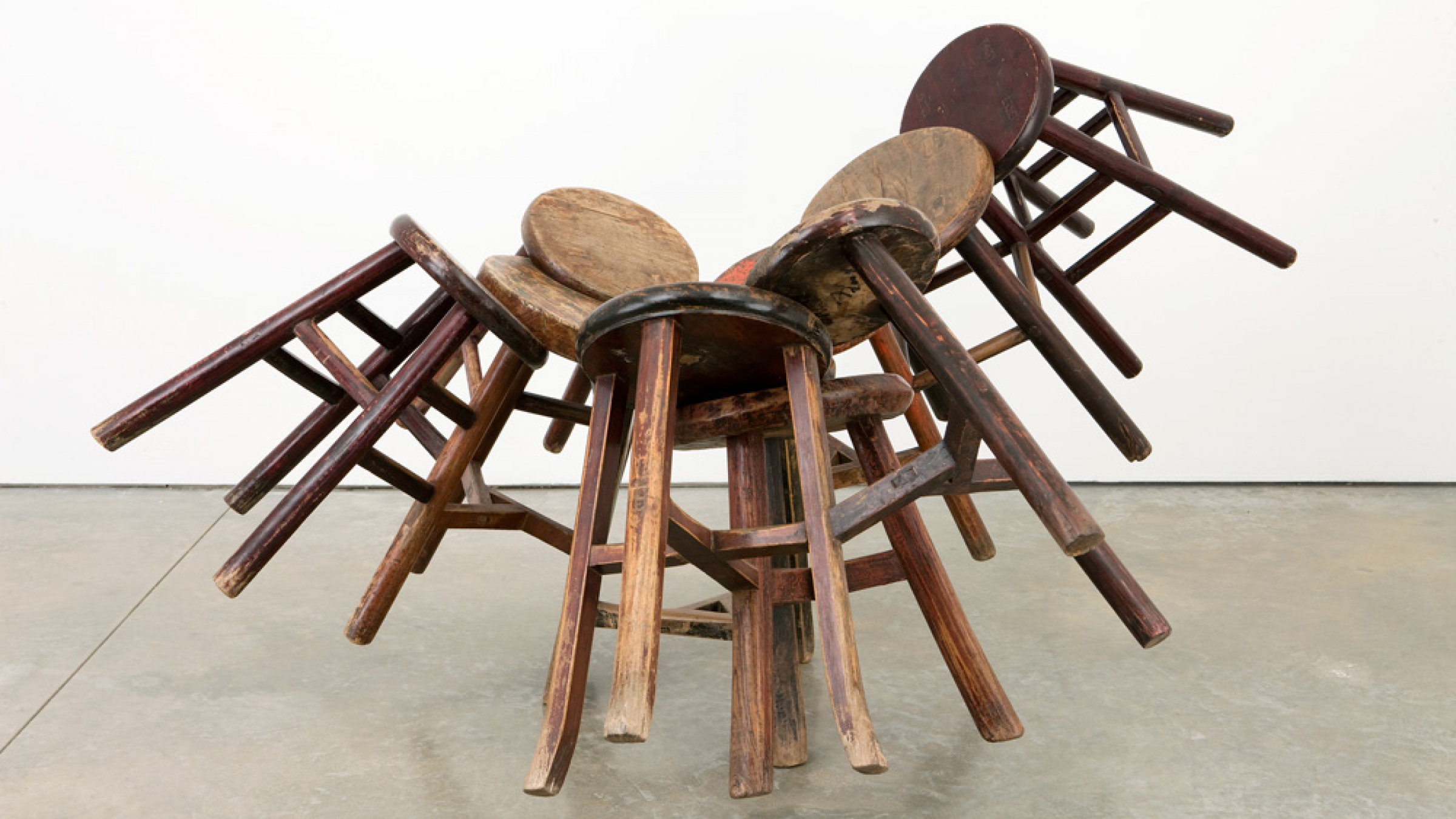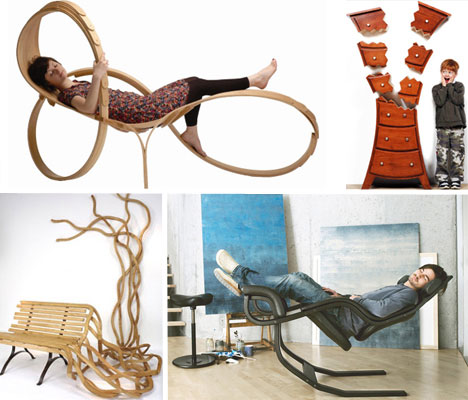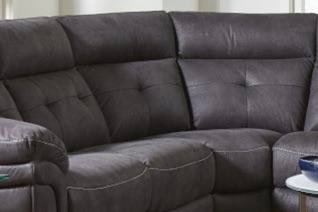As an Amazon Associate I earn from qualifying purchases.
Art furniture blends function with creativity. It transforms spaces into unique expressions.
In today’s world, art furniture stands out. It goes beyond basic function, adding personality and style to your home. Each piece tells a story, crafted with care and imagination. Unlike mass-produced items, art furniture offers something special and distinct. It appeals to those who appreciate both art and design in their living spaces.
This type of furniture becomes a conversation starter, reflecting personal taste and flair. Whether you are a collector or just starting to explore, art furniture can transform any room. Dive into the world of art furniture and discover how it can elevate your home decor.
Introduction To Art Furniture
Art furniture adds a unique flair to home decor. It combines functionality with artistic expression. This type of furniture turns ordinary spaces into extraordinary ones. Let’s delve deeper into what art furniture entails.
What Is Art Furniture?
Art furniture is more than just practical pieces. Each item is a work of art. These pieces often reflect an artist’s vision and creativity. They can be handcrafted or designed by well-known artists. The materials used can range from wood, metal, to even recycled items. Art furniture stands out. It turns a room into a gallery.
Importance Of Art Furniture In Home Decor
Art furniture plays a vital role in home decor. It brings personality and style to a room. Here are some key reasons why art furniture is important:
- Unique Design: Each piece is one-of-a-kind. This adds uniqueness to your home.
- Conversation Starter: Guests will be intrigued. Art furniture often sparks interesting conversations.
- Value Addition: These pieces can increase in value over time. They are investments in art.
- Enhanced Aesthetics: They improve the overall look of your space. Art furniture blends form and function.
Investing in art furniture can transform your home. It creates a space that is both beautiful and functional. Explore art furniture to find pieces that speak to you.
History And Evolution
Art Furniture has a rich and fascinating history. Its evolution showcases creativity and craftsmanship. Let’s delve into the roots and key influences that shaped this unique style.
Origins Of Art Furniture
Art Furniture began in the late 19th century. It emerged as a response to the Industrial Revolution. Craftsmen wanted to create pieces that were unique and artistic. They focused on quality and detail, unlike mass-produced items.
Early Art Furniture featured intricate designs. Skilled artisans used various materials. They combined wood, metal, and glass to create stunning pieces. Each item was a work of art, reflecting the maker’s vision.
Key Movements And Influences
Several art movements influenced Art Furniture. The Arts and Crafts movement was one of the first. It emphasized handcraftsmanship and natural materials. This movement valued simplicity and functionality.
Art Nouveau also played a significant role. It introduced flowing lines and organic shapes. Furniture from this era often featured floral and animal motifs.
Later, the Art Deco movement brought a new style. It combined luxury with modernity. Bold geometric patterns and rich materials defined this period. Each movement contributed to the evolution of Art Furniture.
Today, Art Furniture continues to evolve. Contemporary designers blend traditional techniques with modern aesthetics. This fusion keeps the spirit of Art Furniture alive and relevant.
Types Of Art Furniture
Art furniture comes in many different styles and designs. Each piece tells a unique story and adds character to your space. Below, we explore two popular types of art furniture: contemporary designs and vintage and antique pieces.
Contemporary Designs
Contemporary art furniture is modern and stylish. It often features clean lines and bold shapes. These pieces are perfect for adding a trendy look to your home.
Here are some key features of contemporary designs:
- Minimalistic
- Geometric shapes
- Neutral colors with pops of bold hues
- Innovative materials like metal and glass
Many people love contemporary art furniture for its sleek and polished appearance. It can make any room feel fresh and up-to-date.
Vintage And Antique Pieces
Vintage and antique art furniture adds a touch of history and charm to your home. These pieces are often unique and carry a sense of nostalgia.
Key features of vintage and antique pieces include:
- Ornate details
- Rich, warm colors
- Craftsmanship
- Natural materials like wood and leather
Many people appreciate the timeless beauty of vintage and antique furniture. These pieces often tell a story and can become conversation starters in your home.
Whether you choose contemporary or vintage designs, art furniture can transform your space. Each piece brings its own unique flair and enhances the overall aesthetic of your home.

Credit: madmuseum.org
Materials And Techniques
Understanding the materials and techniques used in creating art furniture can enhance your appreciation for these unique pieces. The combination of high-quality materials and skilled craftsmanship results in furniture that is both beautiful and functional. Below, we explore the common materials and crafting techniques that set art furniture apart.
Common Materials Used
Art furniture often incorporates a variety of materials to achieve its distinctive look and feel. Here are some of the most common materials used:
- Wood: From oak to mahogany, wood provides warmth and natural beauty.
- Metal: Steel, iron, and aluminum add durability and a modern touch.
- Glass: Used for its transparency and elegance, often in tabletops.
- Leather: Adds luxury and comfort, especially in seating pieces.
- Fabric: Various textiles are used to add color, texture, and softness.
Crafting Techniques
The techniques used to craft art furniture are as varied as the materials. Skilled artisans employ traditional and modern methods to create unique pieces:
- Joinery: Techniques like dovetail and mortise-and-tenon joints ensure strength and beauty.
- Carving: Intricate designs are carved into wood, adding detail and character.
- Welding: Used to join metal parts, offering both strength and a sleek look.
- Upholstery: Skilled upholsterers add padding and fabric, enhancing comfort and style.
- Glass Blowing: Creates custom glass pieces that add a unique touch.
These materials and techniques come together to create art furniture that is not only functional but also a work of art.
Choosing The Right Piece
Choosing the right piece of art furniture can transform your home. It can add character, functionality, and a unique aesthetic. This section will help you make an informed decision. You’ll learn how to match your home’s style and consider the functionality of each piece.
Matching Your Home’s Aesthetic
First, think about your home’s current style. Is it modern, classic, or eclectic? Choose pieces that complement your existing decor. A sleek, minimalist chair might fit well in a modern home. Conversely, an ornate, vintage piece could enhance a classic setting.
Consider the colors and materials in your space. Matching wood tones or metal finishes can create a cohesive look. Bold, contrasting pieces can also add interest and depth. Use the following tips to guide your selection:
- Color coordination: Match or contrast with your room’s palette.
- Material harmony: Complement existing materials like wood, metal, or fabric.
- Style consistency: Ensure the piece fits your overall design theme.
Considering Functionality
A piece of art furniture should not only be beautiful but also functional. Think about how you will use the item. Will it serve a practical purpose, like seating or storage? Or is it more decorative?
Functionality is essential in high-traffic areas. Choose sturdy, durable pieces for living rooms or kitchens. In contrast, decorative items can be more delicate and intricate. Here are some considerations:
- Purpose: Decide if the piece is for utility or decoration.
- Durability: Select robust materials for everyday use.
- Space: Ensure the piece fits well in its intended location.
By balancing aesthetic and functionality, you can find the perfect art furniture for your home. Each piece should enhance your space, making it both beautiful and practical.

Credit: neeshfab.com
Incorporating Art Furniture
Art furniture is not just functional but also a statement piece. It transforms a space by adding character and elegance. Incorporating art furniture into your home can elevate the overall aesthetic. Whether in the living room, bedroom, or office, art furniture can create a sophisticated and inviting atmosphere.
Living Room Ideas
The living room is often the heart of the home. It’s where you entertain guests and relax with family. Adding art furniture can make it more inviting and stylish.
- Accent Chairs: Choose bold designs with unique shapes or patterns.
- Coffee Tables: Opt for tables with artistic bases or surfaces.
- Sculptural Lamps: These can add light and serve as conversation pieces.
Mix and match these pieces with your existing decor for a balanced look.
Bedroom And Office Suggestions
The bedroom and office are personal spaces. They should reflect your style and provide comfort. Art furniture can help achieve this.
| Furniture | Ideas |
|---|---|
| Bed Frames | Look for frames with intricate headboards or unique materials. |
| Desks | Choose desks with artistic legs or integrated designs. |
| Nightstands | Select nightstands with creative shapes and finishes. |
These pieces can make your bedroom and office more inspiring and serene.
Caring For Art Furniture
Art furniture is more than just functional pieces; it’s a blend of creativity and utility. Proper care is essential to preserve its beauty and longevity. This guide will provide you with simple tips on cleaning, maintenance, and preservation of art furniture.
Cleaning Tips
Dust your art furniture regularly. Use a soft, dry cloth. Avoid using harsh chemicals. They can damage the finish. For sticky spots, use a damp cloth. Wipe gently to avoid scratches. Dry the surface immediately with a clean cloth.
Maintenance And Preservation
Keep art furniture away from direct sunlight. Sunlight can cause fading and warping. Ensure proper humidity levels in the room. Too much moisture can lead to wood swelling. Use coasters and placemats to prevent stains and scratches.
Inspect your furniture regularly. Look for signs of wear or damage. Address minor issues immediately to prevent further damage. Consider applying a protective wax or polish every few months. It helps in preserving the finish and adds a layer of protection.
Where To Buy
Discover unique art furniture at local galleries, online stores, and specialty shops. Explore vintage markets for rare finds.
Finding the perfect art furniture can be a rewarding experience. Knowing where to buy these unique pieces is essential. Here are some top options for purchasing art furniture.Top Retailers And Galleries
Many top retailers and galleries offer a wide range of art furniture. Stores like IKEA and West Elm provide stylish pieces at affordable prices. High-end retailers like Restoration Hardware and Anthropologie feature unique, artistic designs. Local galleries often showcase works from talented artists. Visiting these galleries can help you find one-of-a-kind pieces. Online marketplaces like Etsy and eBay also have a variety of options. These sites connect buyers with independent artists and sellers.Custom And Commissioned Pieces
Custom and commissioned pieces offer a personal touch. Many artists and craftsmen accept custom orders. You can work with them to create a unique piece. This ensures the furniture fits your style and space perfectly. Websites like CustomMade and Houzz connect clients with artists. You can browse portfolios and read reviews before making a decision. Social media platforms like Instagram and Pinterest also showcase artists’ work. Reaching out to artists directly can lead to commissioned projects. Finding the perfect art furniture involves exploring different sources. Whether purchasing from top retailers or commissioning a custom piece, options abound. Happy shopping! “`
Credit: weburbanist.com
Frequently Asked Questions
What Is Art Furniture?
Art furniture refers to pieces that blend function and artistic expression. These pieces often feature unique designs and craftsmanship, making them stand out as functional art.
How Do You Choose Art Furniture?
Choose art furniture by considering your style, space, and budget. Look for pieces that complement your decor and add a statement to your room.
Where Can I Buy Art Furniture?
You can buy art furniture at specialized galleries, online stores, and furniture boutiques. Check reviews and recommendations to ensure quality and authenticity.
Why Is Art Furniture Expensive?
Art furniture is often expensive due to its unique design, craftsmanship, and materials. Each piece is typically handmade, which adds to its value and exclusivity.
Conclusion
Art furniture adds beauty and character to any space. Unique designs make your home special. It’s not just furniture; it’s art. Each piece tells a story. Your home reflects your personality with art furniture. Choose pieces that speak to you.
Enjoy the blend of function and style. Transform any room with these artistic touches. Embrace creativity and elegance in your decor. Art furniture truly makes a house a home.
As an Amazon Associate, I earn from qualifying purchases.


